Postal service of the German Order
The network of castles and towns created by the Teutonic Order on the captured Prussian lands required certain steps to create a system of governance for the controlled territories. In this sense, the organization of the exchange of messages between all links of the emerging network of fortifications and settlements was of primary importance. For this purpose, the Order managed to create a special postal service in a short period of time (the first mentions of it date back to 1276), the center of which since 1309 was the residence of the Grand Master in Marienburg. During the Thirteen Years' War, in 1457, the residence was moved to Königsberg, which became, accordingly, both the administrative and postal center of the Teutonic Order. This article will examine the history of the postal service on the lands of the Teutonic Order.
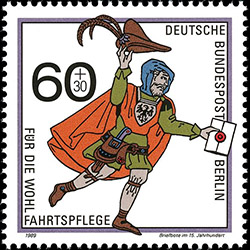
The order entrusted the postal service, the Amtbryff , to the chief stableman, the Stallmeister. The annual budget of the service was 200 Prussian marks. Whether this was a lot or a little can be judged by the fact that a cow cost one mark at that time, and a riding horse - five. On the castle forburgs there were special rooms - the prototypes of today's post offices, called "post stables" ( Bryffstall ), where letters were handed in and issued, special marks were put, postmen rested and courier horses were changed. The "post stable" in Marienburg already existed no later than 1287. The local Prussian breed of horses were used for the postal service - short (1-1.2 m high) "Sveiken" (or "Schweiken"; from the Prussian sweyken - strong, robust). At the beginning of the 15th century, such a horse cost an average of 4 marks. The couriers-postmen - called bryffjongen (postal youths) - were free Prussians, possibly wearing a special blue uniform, and had a special waterproof bag made of waxed canvas ( bryffsack ) for letters. Usually, the order's letter carriers traveled on foot. Horse couriers were used only for urgent and especially important messages. Probably, the postmen also served as scouts.
At the beginning of the 15th century, couriers' pay depended on the distance they had to cover. For example, mail delivery from Elbing to Thorn (approximately 180 km) cost 12 cattle*, and to Königsberg (approximately 110 km) - 8 cattle. Delivery over shorter distances was cheaper: from Elbing to Danzig (approximately 60 km) - 6 cattle, to Braunsberg (approximately 45 km) - 4 cattle. At the same time, mail delivery to Elbing was cheaper.
In addition, the functions of postmen were also assigned to some innkeepers. By renting an inn belonging to the order, the innkeeper received certain privileges (for example, to catch fish and cut timber), but was obliged, in addition to paying rent (the so-called "chinsha"), to deliver official mail. As a rule, the distances over which the innkeeper carried mail were not very long - to the next inn, whose tenant had a similar obligation, or to the nearest official post station. This practice continued in later times.
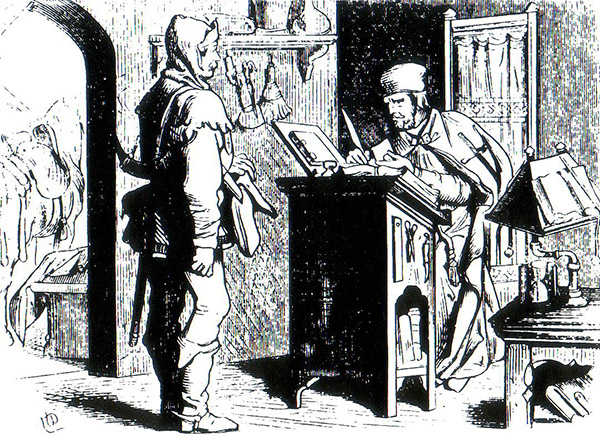
The letters and packages had special markings, such as “day and night,” “very important,” and even whole instructions-directions: “We ask all our brothers, spiritual and secular, wherever they may be, in Prussia or Courland, to send this package with the letters written to our venerable master with the utmost haste, at any time of the day or night, by horseback couriers.”
The speed with which letters were delivered, for example, at the beginning of the 15th century, is astonishing even today. A letter sent from Königsberg was already in Brandenburg Castle (now Ushakovo) in three hours, in Balga Castle in another six, and in another fourteen it arrived in Elbing. Thus, the messengers covered a distance of more than 110 km in 23 hours, i.e. at an average speed of about 5 km per hour.
A letter sent at 10 a.m. on August 12, 1409 from Labiau (now Polessk) was already in Marienburg at 10 p.m. the next day. It covered a distance of more than 180 km in 36 hours . But these are examples of urgent delivery (in today's terminology - express mail), when one horse courier replaced another, and delivery was carried out in the "day and night" mode. The average speed for ordinary dispatches was about 41 km per day, which, you must agree, is also quite a lot for those times and those roads.
Average delivery time of correspondence within the territory of the Order's state in the first half of the 15th century between some castles:
| No. | Postal route | Distance (km) | Delivery time (h) | Delivery speed (km/h) |
| 1 | Königsberg - Elbing | 110 | 26.5 | 4.15 |
| 2 | Königsberg - Marienburg | 137 | 34.5 | 3.97 |
| 3 | Preussisch Holland (Paslenk) - Elbing | 23 | 5.5 | 4.18 |
| 4 | Thorn - Marienburg | 150 | 32.5 | 4.62 |
| 5 | Friedland (Pravdinsk) - Elbing | 161 | 35 | 4.6 |
| 6 | Osterode (Ostróda) - Preussisch Mark (Przeszmark) | 42 | 7 | 6 |
| 7 | Waldau (Nizovye) - Elbing | 115 | 27 | 4.26 |
| 8 | Heilsberg (Lidzbark Warminski) - Elbing | 92 | 24 | 3.83 |
| 9 | Thorn - Graudenz (Grudziadz) | 100 | eleven | 9.09 |
| 10 | Schlochau (Czluchow) - Preussisch Stargard (Starogard Gdanski) | 87 | 40 | 2.18 |
| eleven | Labiau - Elbing | 150 | 36.5 | 4.11 |
| 12 | Soldau (Działdowo) - Preussisch Mark | 100 | 17.5 | 5.71 |
| 13 | Preussisch Mark - Marienburg | 42 | 10 | 4.2 |
| 14 | Kreuzburg (Slavskoe) - Elbing | 90 | 23 | 3.91 |
| 15 | Rastenburg (Kętrzyn) - Elbing | 154 | 42 | 3.67 |
| 16 | Schlochau - Marienburg | 125 | 50 | 2.5 |
Notifications of the arrival of correspondence were recorded with an accuracy of up to an hour. This was made possible by the use of mechanical clocks and the counting of time by so-called "equal hours", without reference to the change of day and night. In this system, the day was divided into two parts of 12 hours each. Probably, one courier was responsible for a certain section of the route. Upon arrival at the destination, the annotation of the delivery of the correspondence along with the date was placed on a list, and the correspondence was handed over to another courier, who covered the next stage of the route. It is important to note here that the speed with which the mail was delivered depended, among other things, on the number of the already mentioned sveiken in the post stables along the route. In large (hub) postal centers, such as Elbing or Königsberg, in the second half of the 14th - first half of the 15th centuries there were up to fifteen horses, while in the briefstalls of small castles, such as, for example, Schlochau and Christburg (now Dzierzgon), there were 2-5 postal horses. Also, it is obvious that the quality of roads in the Middle Ages left much to be desired. Their condition was affected by weather conditions and the time of year. Obviously, periodically, due to bad weather (prolonged rains, snowstorms, ice formation or ice drift, etc.), the speed of the postman's movement could either significantly slow down, or he could wait for more favorable weather conditions.
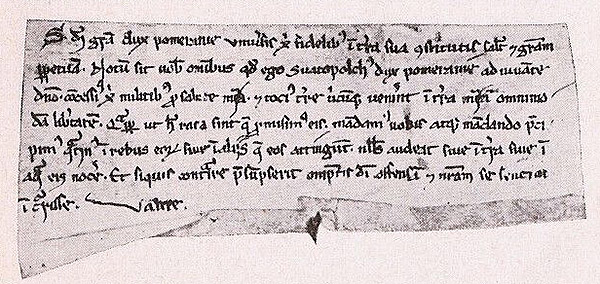
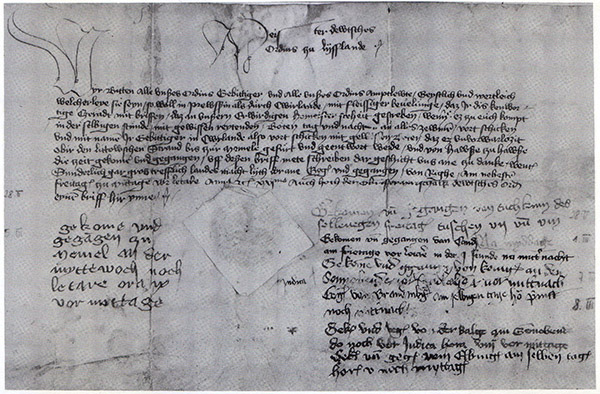
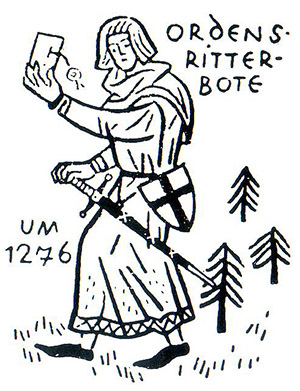
The Order's mail delivered letters, so to speak, official ones. The personal correspondence of the brethren could be sent using the Order's mail only with the exclusive permission of their superiors. The free Prussians (not to mention the enslaved) were overwhelmingly illiterate. The German settlers, even if they were literate, used the Hanseatic mail for their postal needs. In addition, the Order's mail operated only in the territories controlled by the Order. Sending correspondence outside the Order's lands was associated with the same difficulties and the same postal expenses as for all other inhabitants of Europe at that time (for example, the cost of sending a letter by courier from Marienburg to Rome in the Order's times was 10 silver marks). Obviously, the delivery time for private correspondence was also significantly longer.
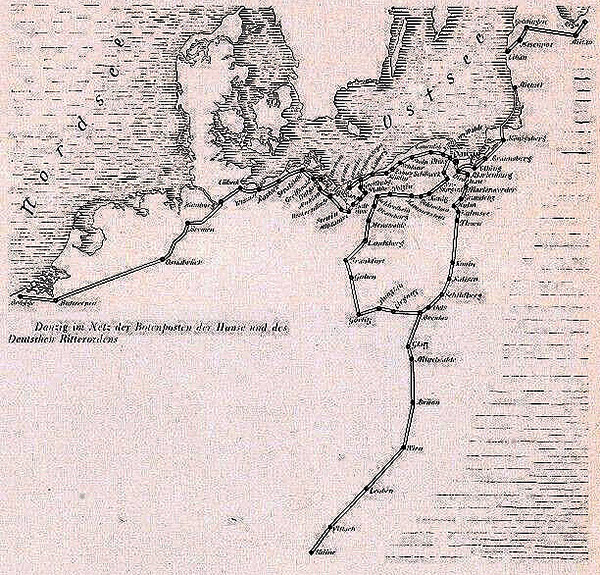
The postal service of the German Order probably ceased to exist in 1525, with the formation of the Duchy of Prussia, or shortly thereafter.
____________________
* Scot ( or Skot ) is a silver coin equal to 1/24 mark or 30 pfennigs, which was in circulation in the 12th–15th centuries in Poland, Silesia and Prussia .
Sources:
www.danzig.org
www.baltictimes.com
Benkmann H.-G. Königsberg (Pr.) and its Post. An article about the post in Königsberg (Pr.) from the order until 1945. Schild-Verlag, Munich, 1981.
Sobczak L. The response to the Krzyzewski Law in the 15th century. Aiming at the mobile phone industry in the middle class. — History — In the woods and in the forests. Toruń 2016, p. 105-116.
